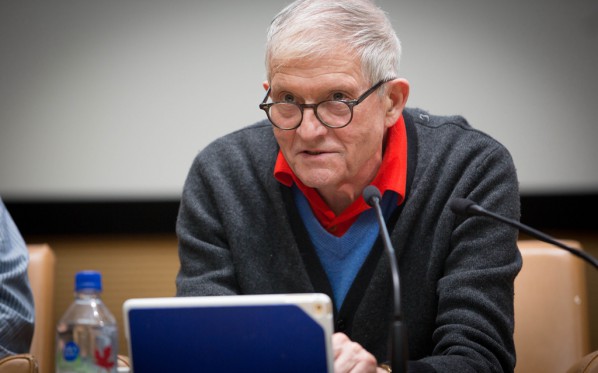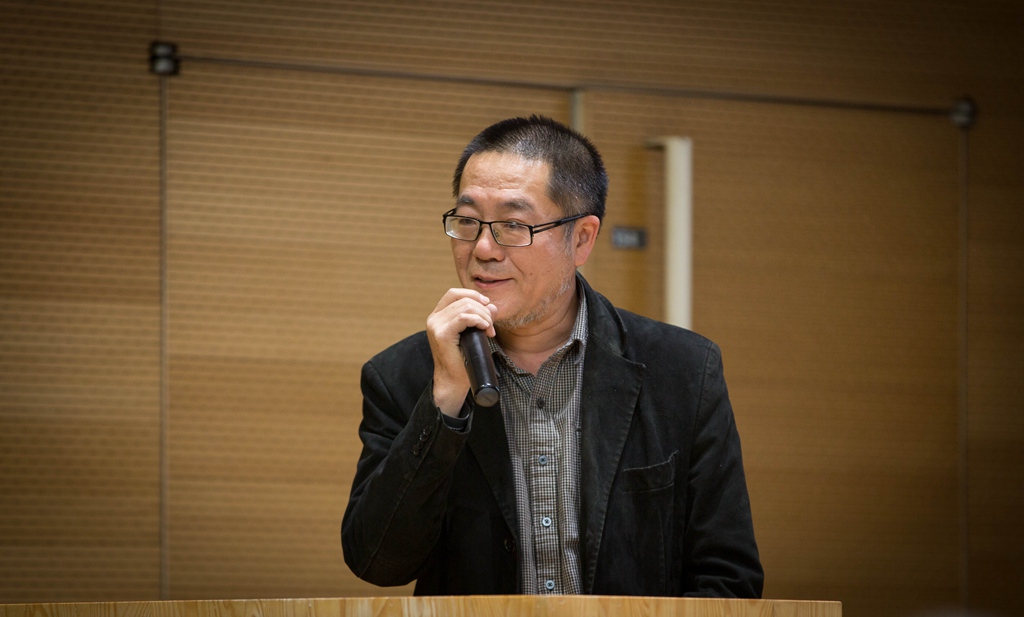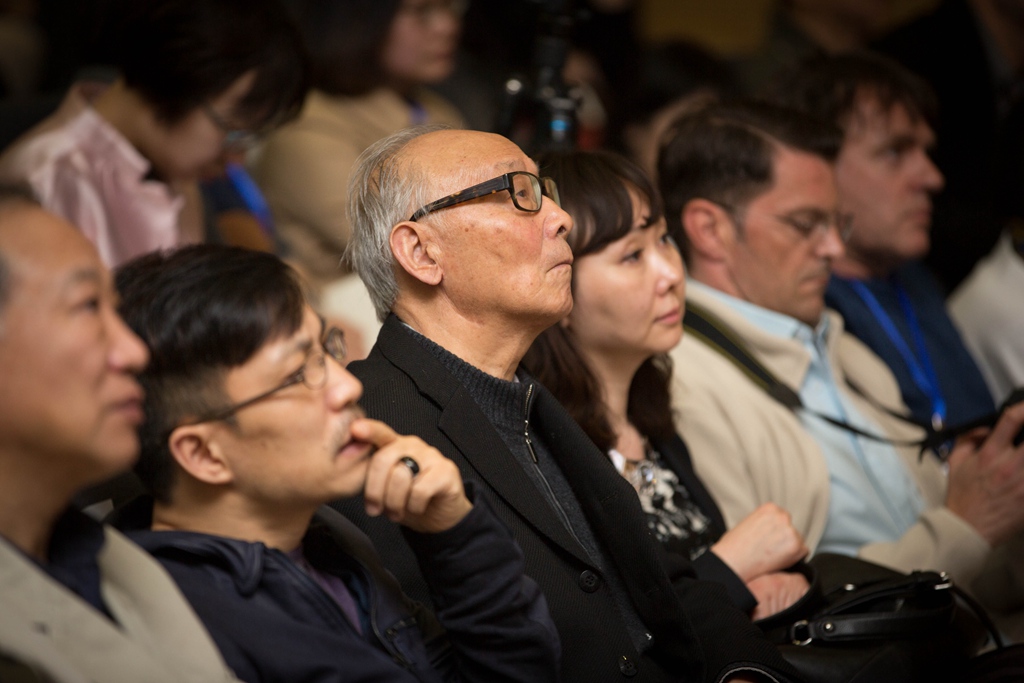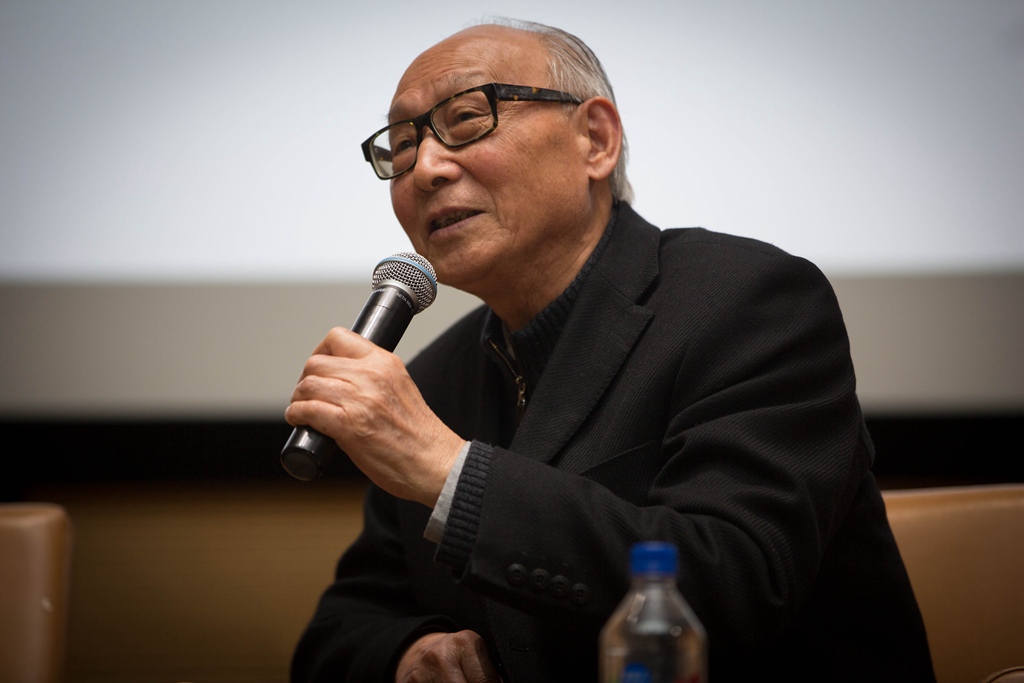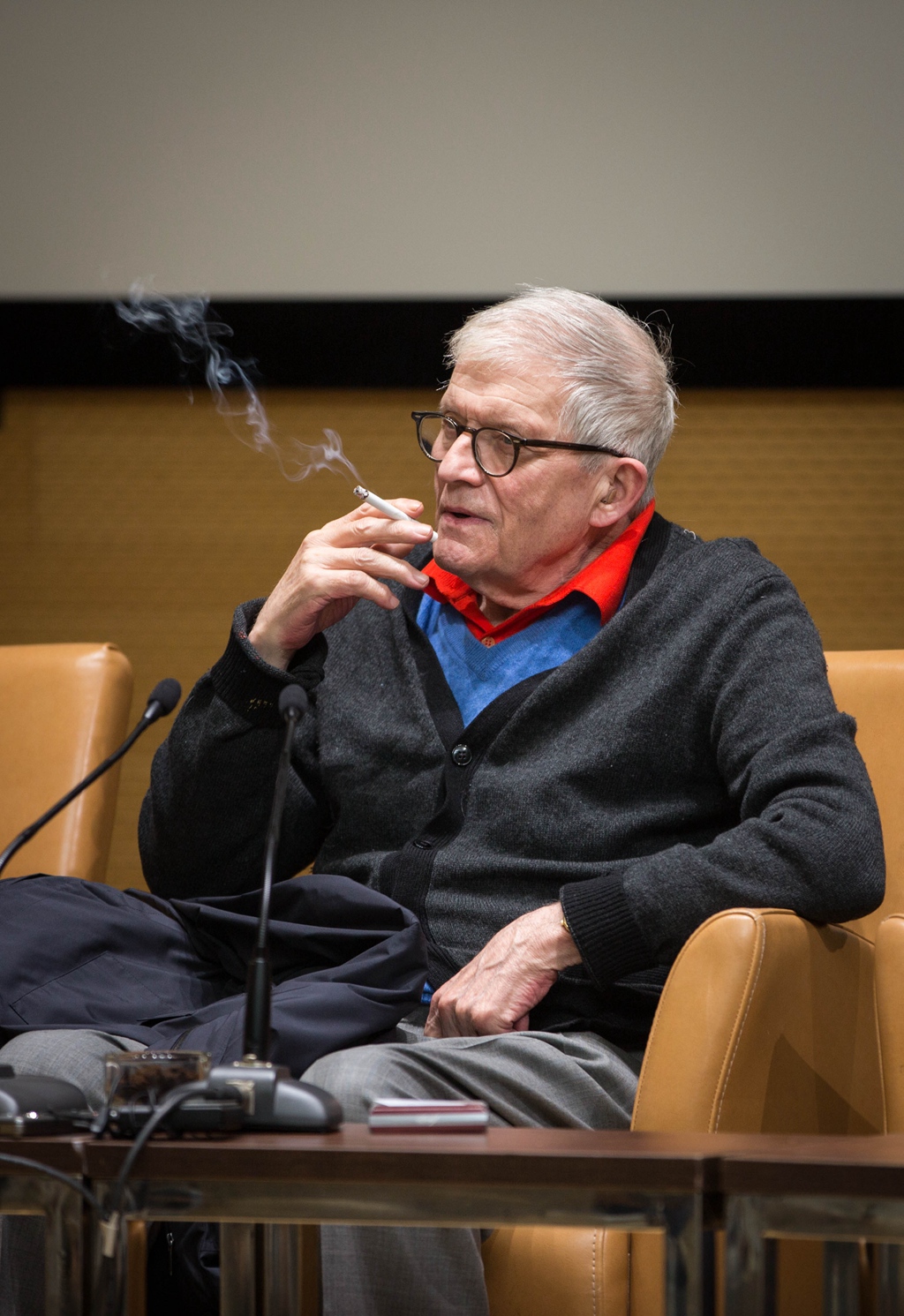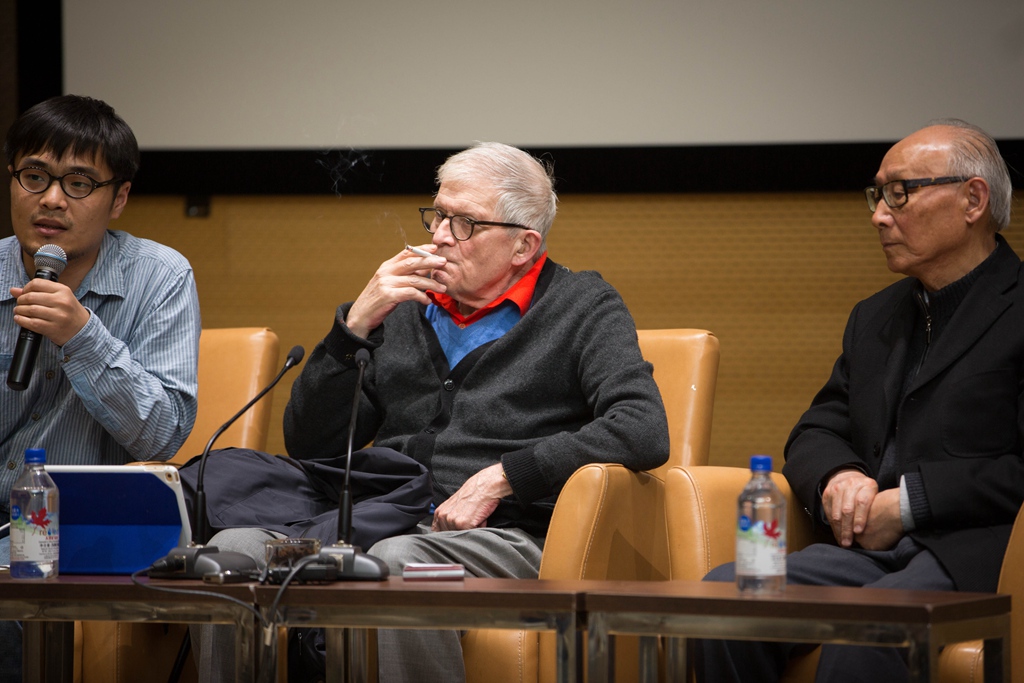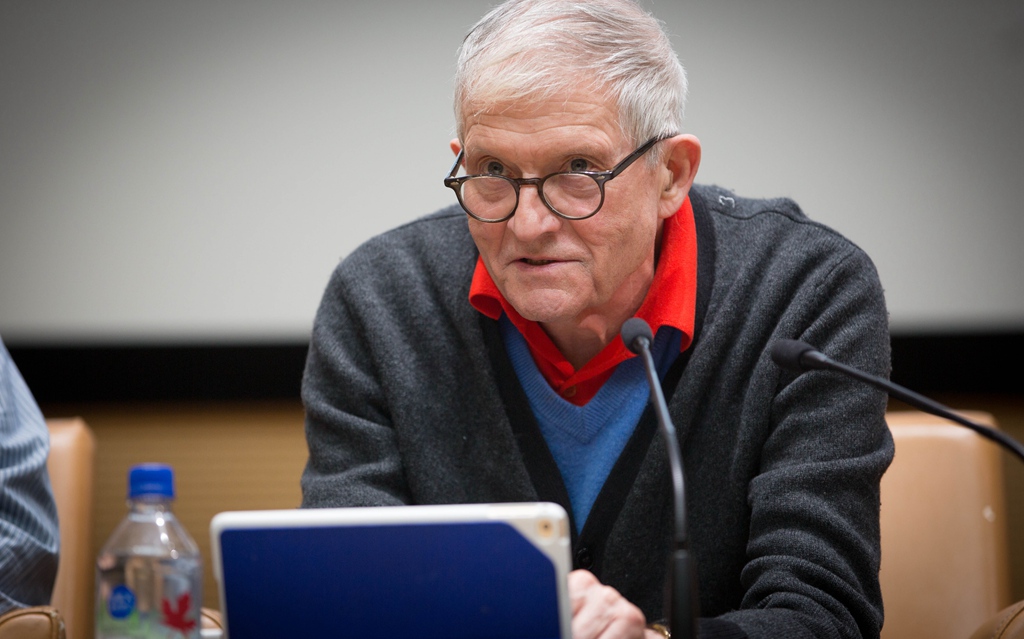Please click the picture above to view the video.
An important contributor to the Pop art movement of the 1960s, David Hockney is considered one of the most influential British artists of the 20th century. He was invited to talk about his art at CAFA Art Museum on 16 April ahead of his upcoming exhibition at Pace Beijing. The exhibition "David Hockney: The Arrival of Spring" will feature his 'iPad drawings and video', which runs from Saturday 18 April to early June.
Along with David Hockney’s tour in China, it launched two lectures in Peking University and CAFA, where the artist communicated with Chinese art students. After the lecture at Peking University, Hockney gave a lecture at the Auditorium of CAFA Art Museum at 6:30 pm on April 16, 2015. The lecture was entitled “My Way of Viewing”, to mainly expound the different ways of seeing, the perspective and way of expressing the art world around art creations and had an academic dialogue with Professor Shao Dazhen from CAFA.
David Hockney (Born in Bradford, England, 1937) is considered one of the most influential artists of the world. In Hockney's art career, his works stretch across a vast range of media, from paintings to the work of unique photographic collages, from video installation to the design of a stage for opera, as well as using a unique view to subvert the cognition of western painting.
The lecture was presided over by Wang Huangsheng, Director of CAFA Art Museum, and he introduced the fact that Hockney first traveled to China in 1981, and visited CAFA together with Shao Dazhen at that time, after returning to USA he had a great interest in Chinese scroll paintings, which affected his later artistic creations. When Wang Huangsheng organized an exhibition in London in 2012 which coincided with Hockney’s solo exhibition, he witnessed the process of Hockney using 9 cameras to take photos for a creation and he believed that Hockney’s paintings were beyond pictorial expression.
The lecture through a series of new works was able to expound the way of “seeing” by David Hockney who constantly tries a variety of skills, studying the pictorial perspective relationship from a variety of angles, helping the audience know more about the way of looking at in his work. The recent creations of Hockney are the images that mainly consist of photos, and he carries out the idea of “reverse perspective” in the pictures. Linear perspective has been established since the Renaissance, with only one viewing point in the whole picture, through “near (big) and far (small)” to construct a true artistic view. Hockney said it was reversed in his creation, and said his works were made up of images, which were composed of photos, and everything in the photographs was taken from a close perspective. Hockney used an iPad to showcase his works, where the chairs, figures, scenes, or the figures’ clothes, trousers, shoes had their own different perspectives, each “chair” had a single vanishing point, it could be seen alone, using different perspectives so he built his own visual world. It is different from the scenes taken as an one-off using the camera, and we can’t see the whole painting at once, but it is necessary to use a mobile observing perspective to wander alone in all details. By observing his paintings, we can feel that it is more vivid has a three-dimensional effect, and Hockney said his work was three-dimensional painting using the naked eye. It is obvious that Hockney draws lessons from the cavalier perspective and varying scenes with changing view-points of traditional Chinese painting.
Hockney used a number of photographs during the creation, he said that, optical technology worked for painting before 1839, when the photograph was born, it had an “invisible hand” affecting our way of viewing, until Adobe announced the photoshop software, he said that at that time, “Photoshop represents the end of the chemical photograph”. Hockney also demonstrated a series of video works, such as the “Circus” which is like a Chinese hand-scroll painting, and it is highly consistent with the principle of Chinese painting.
In addition, Hockney held a short dialogue with Shao Dazhen, and it was the second time for the two masters to communicate with each other face to face since 1981. Chinese art seems to be “updated” quickly and the artists are divided into groups by generation, such as the post-60s, post-70s, post-80s, Hockney said, we all lived in here and now, now was the most important, the same for art. For traditional, avant-garde, or different forms of art, he had a completely open and inclusive attitude, only considering whether it helps his art creation or not.
At the end of the lecture, Hockney interacted with the audience, sharing his experiences of studying art, state of creation, etc., for him, painting was able to keep him young, as Picasso said, he was only thirty years old when he painted. Hockney finally suggested that students should adhere to the self, and you would finally find a new way of seeing the world.
On April 18, David Hockney’s solo exhibition will open in Pace Beijing, showing us the art world of the “young” senior man. It will feature a series of iPad drawings as well as the work of video installation, depicting the scenes in Woldgate of East Riding of Yorkshire, UK.
Text by Zhang Wenzhi, Photo by Yang Yanyuan/CAFA ART INFO
Translated by Chen Peihua and edited by Sue/CAFA ART INFO
About the artist
David Hockney (Bradford, England, 1937) has produced some of the most vividly recognizable images of this century. His ambitious pursuits stretch across a vast range of media, from photographic collages to full-scale opera stagings and from fax drawings to an intensive art historical study of the optical devices of Old Masters. David Hockney received the gold medal for his year at London's Royal College of Art in 1962. The artist had his first one-man show in 1963 at the age of 26, and by 1970 the first of several major retrospective was organized at Whitechapel Gallery, London, which subsequently traveled to three additional European institutions. Hockney has received a vast number of accolades throughout his career, including nine honorary degrees from institutions worldwide.
Courtesy of the artist and CAFA Art Museum, filmed and edited by Yang Yanyuan/CAFA ART INFO


